- Home
- Child Safe Organisations
- Child Safe Standards
- ...
- Standard 2
Queensland's new child safeguarding law introducing Child Safe Standards commenced from 1 October 2025. Find out when you need to comply.
Children are informed about their rights, participate in decisions affecting them and are taken seriously.
Creating spaces where children are knowledgeable about their rights and confident in their ability to express concerns, provide input, and participate in meaningful ways is an important aspect of being child safe.
The adults who support children in your organisation need to understand and respect children’s agency and take steps to ensure they are treated as competent and capable. This means adults tailor their approach based on the age, developmental stage, culture and any other specific needs of the child. Decision-making processes should centre on the perspectives of children and demonstrate genuine respect for their views.
Actions you can take to apply this Standard in your organisation
- ensure children have access to resources and tools that enable them to understand all of their rights, including the right to safety, information and participation – for example, posters or videos
- where relevant to the setting, offer children access to age-appropriate information or programs about preventing abuse
- regularly seek feedback from children about their safety and wellbeing in ways they feel comfortable with and take action on what you hear
- facilitate child-friendly ways for children to express their views, participate in decision-making, and raise their concerns, and ensure staff and volunteers are attuned to signs of harm or risks of harm
- put strategies in place to build a culture of participation that is responsive to the input of children – for example, training staff in active listening and child-centred communication techniques
- ensure the information provided through child centred engagement activities is incorporated into service and program improvements
- develop a child-friendly complaints process with clear steps on how feedback will be used and acted on.
What if you’re a sole trader, small business or volunteer community group?
- regularly ask the children involved with your business to provide feedback on their safety and wellbeing and take action on what they say
- make children feel comfortable and confident to express their views, especially any concerns about harm or abuse
- make sure your communications are child friendly.
How does cultural safety look?
- make sure your resources and information are culturally safe by developing them with Aboriginal and Torres Strait Islander children and families
- value and respond to the contributions of Aboriginal and Torres Strait Islander children to build their trust and confidence to participate.
Successful implementation looks like a business or organisation where:
- children report feeling respected and heard within the organisation
- there is evidence that key decisions and policies have been shaped by input from children
- staff and volunteers demonstrate strong knowledge of, and practice in, child-centred communication
- staff and volunteers are equipped with the necessary training and skills to provide culturally safe, trauma-informed and strengths-based care and support to children
- feedback mechanisms are regularly used with children and result in actionable outcomes at all levels of the organisation.
Further guidance
In addition to the information above, please find below some more specific resources that may be helpful for you to meet this standard. This is not an exhaustive list of the resources that are available but is a useful starting point.
There are some practices and activities that many organisations are already doing that will meet this standard. Some of these will be relevant across several standards. For example the development of a Child and Youth Wellbeing Policy could cover several requirements.
- The Victorian Children’s Commission provides an overview of the types of actions and documents an organisation would have in place to achieve this standard.
- Protection through participation: Involving children in child safe organisations is a practitioner resource providing practical guidance for involving children in child safe organisations.
- The QFCC Model of Participation and the Child and Youth Participation Framework provide information on how to meaningfully engage young people in decision making.
- Victoria’s Empowerment and participation guide is a useful tool for organisations working with children and young people.
- The Centre for Multicultural Youth has developed a Good Practice Guide for strategies to engage young people from refugee and migrant backgrounds.
- The Youth Affairs Network Queensland (YANQ) has created a Resource Guide to Involving Young People with a Disability in Decision-making.
- For more information on the UN Convention of the Rights of the Child visit the UNICEF website.
- Children’s Rights Queensland has a range of resources and initiatives to raise awareness of the needs, rights and achievements of children.
Visit our Resources webpage for more information.
Last updated
1 October 2025


